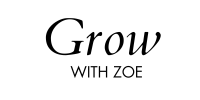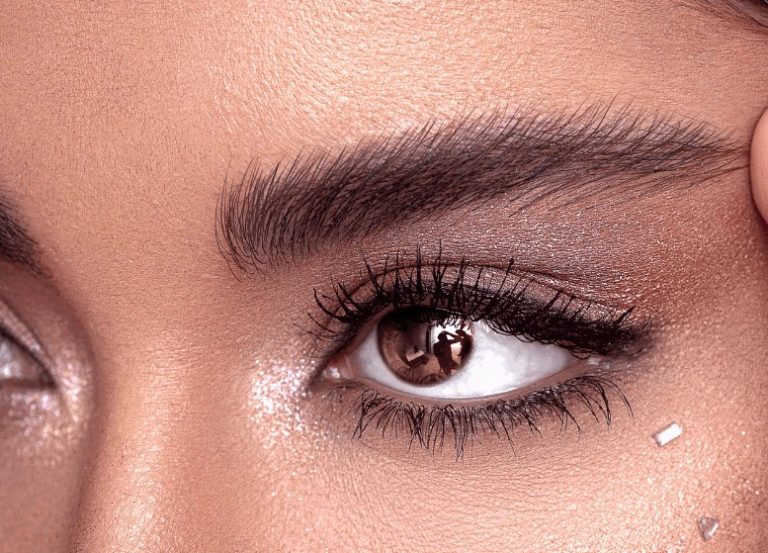Makeup Application: The Best Tips for Beginners
Are you struggling with applying makeup? I hear you. Knowing the basics of makeup application is a great confidence booster, especially when you understand how to achieve a smooth, radiant complexion in minutes rather than hours.
As someone who has spent more time than I care to admit trying different makeup application techniques, I always come back to the same trusty routine.
If you’re ready to learn more about my favorite makeup application tips, dust off your brushes and read on.
In this handy guide, you’ll discover:
- Makeup application steps for beginners, including what you need in your basic makeup kit
- The best step by step makeup application tips to create a flawless base, such as your base, contouring, eyeshadow, and lips
- Bonus tips for creating the perfect look every time
Related Posts:
- How to start a makeup collection
- The ultimate way to have a glow up and become your best self
- Best MAC eyeshadows for blue eyes
- Dior Backstage concealer review
- 37 pretty mint green nail ideas
Makeup Application Basics
What is the correct way to apply makeup?
Before we look at makeup application, step by step, there are a few basics to keep in mind.

Preparation
Before you start applying makeup, it’s important to prepare your skin. This means cleansing your face to remove any dirt, oil, or makeup residue. Once your face is clean, apply a moisturizer to hydrate your skin and create a smooth base for your makeup (you can also use a primer on top of your moisturizer too!).
Tools
Having the right tools is essential for flawless makeup application.
I suggest having a foundation brush or sponge, concealer brush, blush brush, eyeshadow brush, and lip brush. You may also want to invest in a spoolie brush for your eyebrows.
An eyelash curler and lip liner can also be useful tools to have in your makeup bag.
Products
When it comes to makeup products, there are a few essentials that you should have on hand.
These include:
- Foundation
- Concealer
- Powder
- Blush
- Highlighter
- Mascara
- Eyeshadow
- Eyeliner
- Lipstick
You may also want to use primer, bronzer, or contour products too.
How to Create a Flawless Base
How do beginners apply makeup? What is a simple makeup routine?
Flawless makeup always starts with your base. Here are some of my top tips to help you create a simple look for beginners.
Choose the right foundation
Choosing the right foundation is crucial. Your foundation should match your skin tone and provide the right amount of coverage for your needs.
For example, if you have oily skin, you may prefer a foundation that is oil-free and mattifying. Whereas, if you have dry skin, a hydrating foundation is best.
When choosing a foundation, it’s also important to consider the applicator. You can use a brush, sponge, or your fingers to apply foundation. Brushes are great for a more precise application, while sponges are perfect for blending.
Apply and blend foundation
Once you have chosen the right foundation, it’s time to apply and blend it.
Start by applying a small amount of foundation to the center of your face and blend it outwards. Use a dabbing motion to apply the foundation and a buffing motion to blend it in.
Pay special attention to areas that need more coverage, such as blemishes or uneven skin tone.
Conceal blemishes and discoloration
To conceal blemishes and discoloration, choose a concealer that matches your skin tone or is slightly lighter. Apply the concealer to the affected areas and blend it outwards using a brush or sponge.
If you want to contour your face, use a contour powder or cream that is a few shades darker than your skin tone. Apply the contour powder to the hollows of your cheeks, temples, and jawline to create definition.
Set your base with powder
To set your base and prevent it from smudging or fading, use a translucent setting powder. Apply the powder to your face using a large powder brush.
Enhance Your Features with Contour and Highlight
Contour for definition
Contouring is a makeup technique that involves using a darker shade of makeup to create a shadow effect, defining certain areas of your face. This technique can be used to create the illusion of a slimmer nose, sharper cheekbones, and a more defined jawline.
To contour, it’s best to choose a contour powder or cream that is a couple of shades darker than your skin tone – use a small, angled brush to apply it to the areas you want to define. These could be the sides of your nose, the hollows of your cheeks, and the perimeter of your face.
Blend your contour using a makeup sponge or a brush to avoid harsh lines and ensure a natural-looking finish. If you’re a beginner, go in with a light hand to start with and build up the intensity gradually.
Highlight for radiance
Highlighting is essentially the opposite of contouring and involves using a lighter shade of makeup to bring attention to certain areas of your face, such as the high points of your cheekbones, the bridge of your nose, and the cupid’s bow.
To highlight, choose a highlighter that complements your skin tone and use a fluffy brush to apply it to the areas you want to accentuate.
For a more natural look, use a translucent setting powder to set your makeup and blend everything together seamlessly.
Accentuate Your Eyes
To make your eyes stand out, there are a few clever tricks you can use. Here are some tips to help take your eye makeup game to the next level.

Create a base with eyeshadow primer
Before applying eyeshadow, create a smooth base for it to adhere to. Use an eyeshadow primer to prep your eyelids and help your eyeshadow last longer.
Simply apply a small amount of primer to your lids and blend it in with your finger or a brush.
Apply eyeshadow to enhance your eye shape
When it comes to eyeshadow, the key is to use colors that complement your skin tone and enhance your eye shape.
If you have hooded eyes, use light colors on the lid and darker colors on the crease to create the illusion of depth.
If you have round eyes, use darker colors on the outer corners and lighter colors on the inner corners to elongate them. Use an eyeshadow brush to apply the shadow and blend it out for a seamless finish.
Define your eyes with eyeliner and mascara
Eyeliner and mascara are the finishing touches that can really make your eyes pop.
Use black or brown eyeliner to define your lash line and make your lashes appear fuller.
For a more dramatic look, try tightlining your upper waterline with a white eyeliner to make your eyes look bigger. Finish off with a coat of mascara to lengthen and volumize your lashes.
Remember, practice makes perfect when it comes to eye makeup application. Don’t be afraid to experiment with different colors and techniques to find what works best for you.
Add Color with Blush and Lipstick
Adding a pop of color to your face with blush and lipstick can make a massive difference, whether you want a natural flush of color, or a more sophisticated look.

Choose the right blush color
The right blush color enhances your natural complexion and gives you a healthy glow. To choose the right shade, consider your skin tone.
For fair skin, lighter pink or peach tones work well. For medium skin, try warmer pink or coral shades. For deeper skin tones, opt for beautiful richer pinks or berry shades.
Apply blush for a natural flush
To apply blush for a natural flush, start by smiling to find the apples of your cheeks. Using a blush brush, apply the color in a circular motion on the apples of your cheeks and blend upwards towards your temples. Be sure to tap off any excess pigment before applying to avoid a heavy-handed look.
Select the perfect lipstick shade
The right lipstick shade brings out the natural beauty of your lips while complementing your skin tone.
Light pink or nude shades look pretty on fair skin, while medium skin tones should go for warmer shades like coral or peach. For deeper skin tones, darker berry or red shades work well.
Apply lipstick for a polished look
To apply lipstick for a polished look, start by exfoliating your lips with a lip scrub and applying a lip balm. Next, line your lips with a lip liner that matches your lipstick shade.
Apply your lipstick with an applicator or brush, starting at the center of your lips and working your way outwards. Blot with a tissue and reapply for a longer-lasting finish. For extra shine, add a layer of lip gloss on top.
FAQs
Do you put concealer on after or before foundation?
Usually, you apply concealer after your foundation. However, if you have any angry red blemishes or rosacea, you may wish to use a color correcting concealer under your foundation for extra coverage.
Do you set your makeup before or after foundation?
Set your makeup after your foundation and concealer.
Should you put foundation under your eyes?
Some people like to apply foundation under the eyes, especially if they have dark circles. However, you may find it makes your under eye area look more cakey. Applying concealer generally works best.
How do you make your makeup look smooth and not cakey?
Spray your face with a dewy or hydrating setting spray and pat the face gently with a beauty blender. Alternatively, if you find your makeup is looking cakey, dampen a beauty sponge with a little water and softly pat over any cakey areas.
Start Using These Top Makeup Application Tips Today!
Applying makeup can be an artistic way to enhance your natural beauty. Now have some extra makeup application knowledge, you can begin to use the tips in this guide to create a flawless look.
Just remember to be open to trying new things – although these tips are a brilliant starting point, you may want to try out fun colors to test bold and exciting looks.







